Lead your nation in the F2P browser strategy game Call of War by the turmoil of the Second World War and the beginning of the Atomic Age and the Cold War.
RTS game Call of War
Table of Contents
Call of War is a real-time strategy (RTS) game set during World War II, developed by Bytro Labs. It combines elements of grand strategy, resource management, and military tactics, allowing players to take control of a nation and lead it through the complexities of wartime diplomacy, economy, and combat.
Overview
Key Features:
– Historical Setting: The game is set during the period of World War II, from 1939 to 1945, featuring authentic units, technologies, and scenarios based on the era.
– Nation Management: Players choose from numerous countries around the world, each with unique strengths and strategic positions. Managing resources, production, research, and diplomacy is crucial.
– Military Strategy: Build and command armies, navies, and air forces. Plan battles on land, sea, and air, considering terrain, unit types, and logistics.
– Diplomacy and Alliances: Form alliances, negotiate treaties, and engage in espionage or sabotage to gain advantages over opponents.
– Multiplayer: The game supports large-scale multiplayer matches with hundreds of players competing or cooperating in persistent game worlds.
– Real-Time Gameplay: Unlike turn-based strategy games, Call of War operates in real-time, requiring constant attention and strategic planning over extended periods.
Gameplay Overview:
Players start by selecting a country and managing its economy, infrastructure, and military forces. Researching technologies unlocks advanced units and capabilities. Players can expand their territory through warfare or diplomacy, balancing resource allocation between civilian needs and military production. The game emphasizes strategic depth, including logistics, supply lines, and combined arms tactics.
Platforms:
Call of War is primarily a browser-based game but also offers mobile versions for iOS and Android, allowing players to engage on multiple devices.
Game description if Call of War
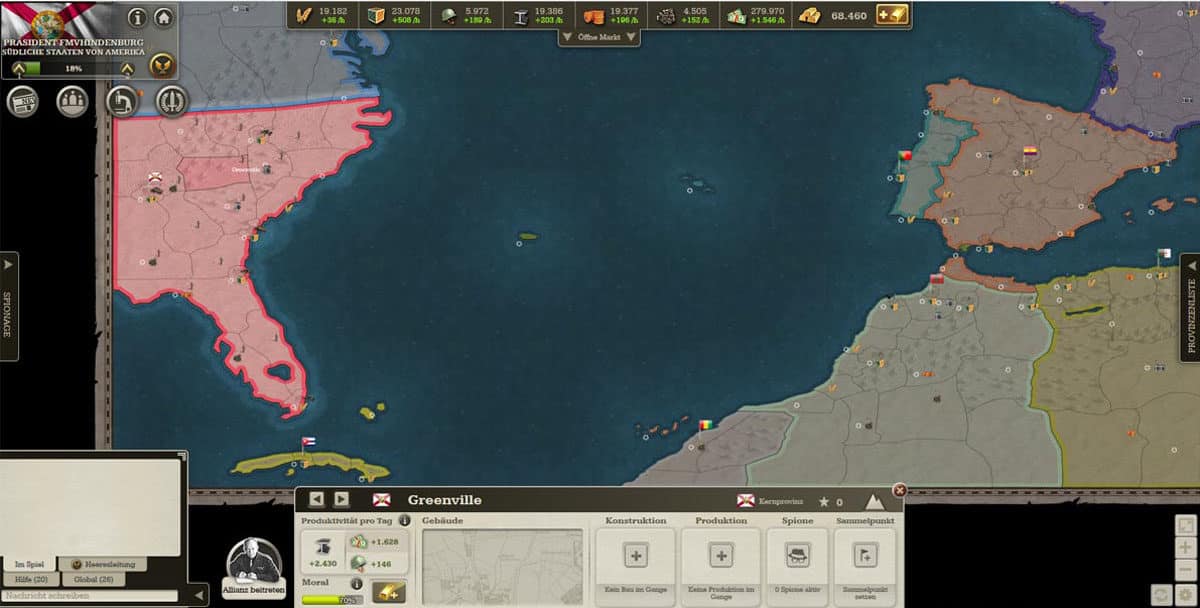
In a standard game of the free browser strategy game Call of War (superficially similar as in the already presented Supremacy 1914 in the time of World War One) you have to lead your nation through the age of WW2 and the beginning Cold War with Nuclear weapons and missiles.
However, Call of War comes with some innovations, changes and more appealing graphics – and the management of the armed forces, the economy and the battles in real-time is clearer and with less effort for the player compared to Supremacy 1914. There are much more different units which can be improved and researched.
Game Map
The game map stretches from the eastern part of North America (Canada to Cuba) to the Middle East, and from Greenland and the North Cape to the South to the North African desert.
The countries do not always correspond to the historical situation and have been adapted so that they are roughly equal. Some great powers (such as the US and the Soviet Union) were divided into several states, while some smaller states were united into a major (such as ‘Greater Romania’ in the Balkans).
All 22 players begin with 20 so-called ‘core provinces’. Core provinces are provinces with a national population and produce money, labor and recruits and some of them raw materials for 100% while other provinces are considered ‘occupied areas’ and produce a maximum of 25% of them.
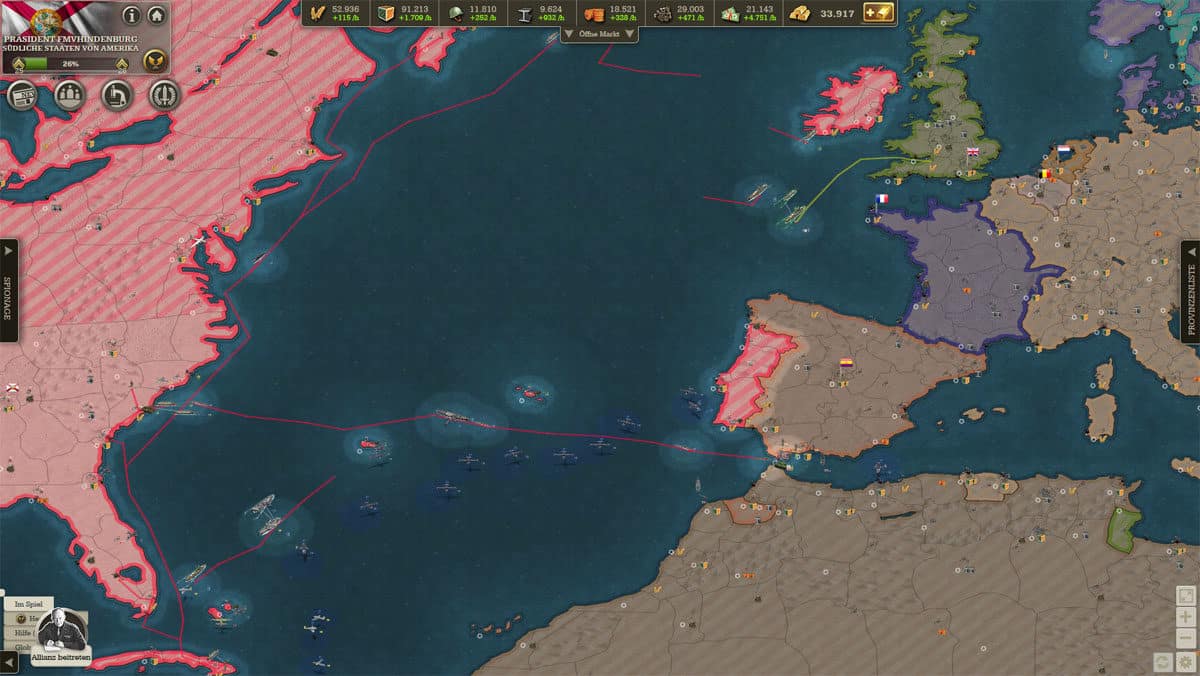
At this point, the optimization and simplification of the game Call of War versus Supremacy 1914 begins: while the player in Supremacy 1914 later must constantly monitor and expand countless provinces, it is enough in Call of War to concentrate on the core provinces, while the expansion of the other provinces is only economically worthwhile in the rarest cases. Also, these ‘core provinces’ are also areas whose defense is vital.
All other provinces are only needed for minor additions of missing raw materials, as bases for harbors and airfields and essentially for the collection of the required victory points to win the game.
By the way, each province now has a certain terrain (flatland, mountains, forests, cities), which has different influence on the speed and combat performance of the different units.
Units

In Call of War there are also different units than in Supremacy 1914, which must be researched and further developed. Since this is not possible for all of them (only two researches can be carried out at the same time), one has to concentrate on the focus.
In addition to infantry, there is militia, motorized infantry and mechanized infantry (in APC’s).
In the category vehicles there are armored vehicles, light tanks, medium tanks, heavy tanks, anti-tank guns, artillery, self-propelled artillery, anti-aircraft guns and self-propelled anti-aircraft guns.
As aircraft there are interceptors, tactical bombers, strategic bombers and naval bombers.
In the case of the naval units there are destroyers, submarines, cruisers, battleships and aircraft carriers.
Finally, in the case of secret weapons, there are rockets, rocket fighters, railway long-range artillery, commando units, nuclear power, atomic bombs, atomic bombers, atomic rockets and nuclear-powered battleships, submarines and aircraft carriers.
All are identical for all nations and can be equally deployed.
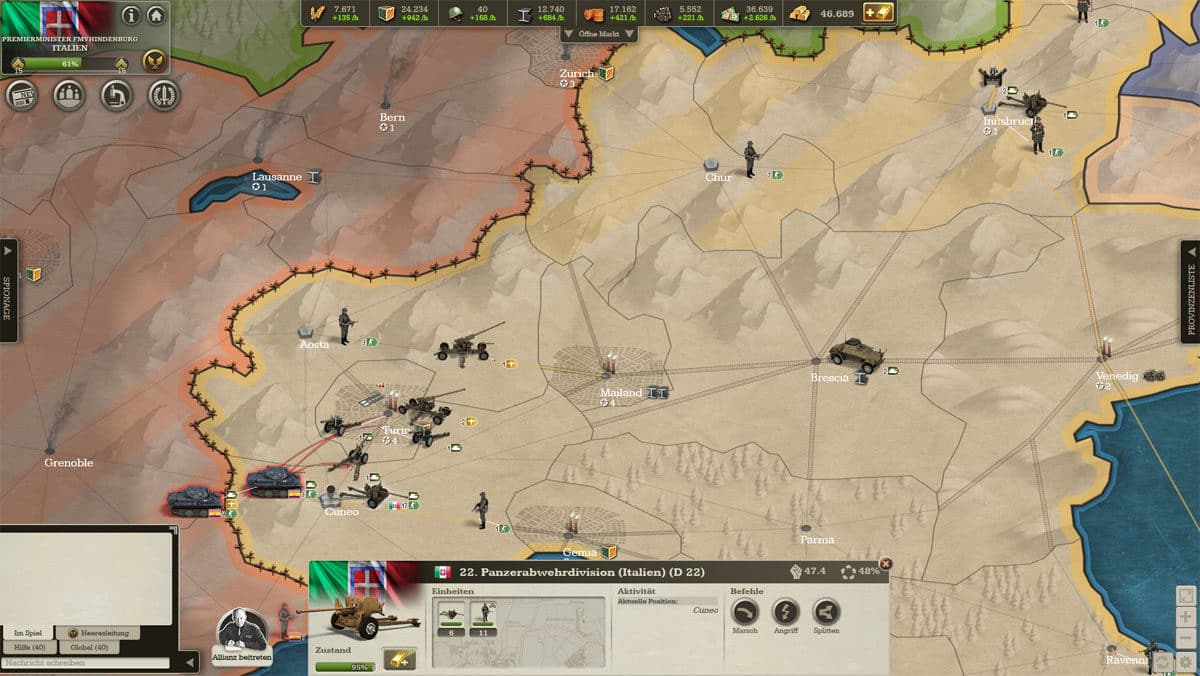
In this range, Call of War is much more complex than Supremacy 1914, as a predictive development of the most likely units is unavoidable.
There is also a ‘scissors-stone-paper’ principle, so that certain units are very useful when the opponent is mainly specialized in a particular unit type. For example, good anti-tank guns, especially in suitable terrain or with deployed positions, has a strong influence on attacking, hostile armored units and is also more economical, but little suited for the attack.
Commando units are best suited for defense and attack in the mountains, while medium tanks are the best unit of attack for land warfare, as long as you do not have to fight in cities and encounter protected anti-tank gun positions.
Tactical bombers can smash ground units without air cover by fighters or anti-aircraft guns, while naval bombers can discover and fight submarines as well as enemy submarines.
After all, there are still atomic bombs to explore, which can put whole cities in ruins. As an alternative, there are also cruise missiles (V-1) and rockets (V-2), which finally culminate in an atomic rocket which can not be caught by fighters.
Provincial development
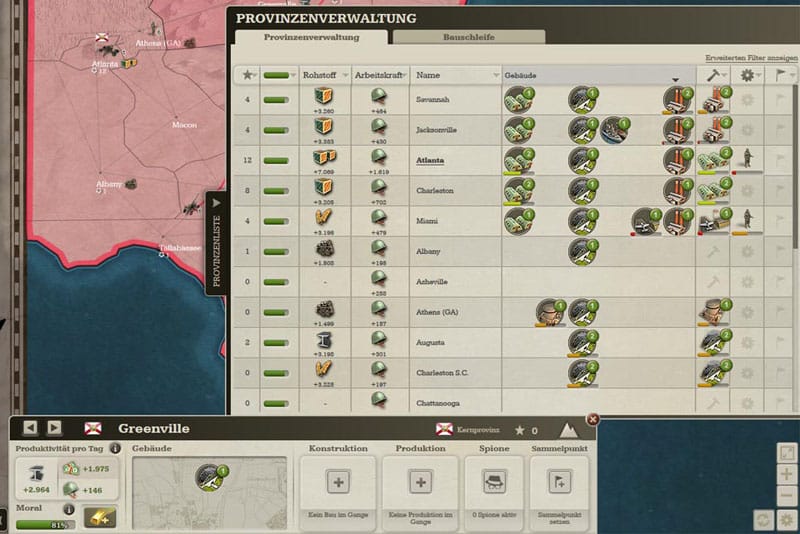
As mentioned above, the provincial development is also easier and clearer than in the case of Supremacy 1914. The provincial administration menu, which can be folded out on the right, clearly shows the respective victory points, morality, raw materials (including production volume), workers, buildings (sorted and activated or deactivated), construction of new building and units. This table can be arbitrarily sorted and since only the own core provinces (plus some possibly occupied provinces with double production volumes or important bases, fortifications or production areas close to the front line) are important, everything can be easily overviewed and controlled here.
In addition, each provincial city can also be clicked on the map, where buildings, production units or orders for spies can be determined or checked.
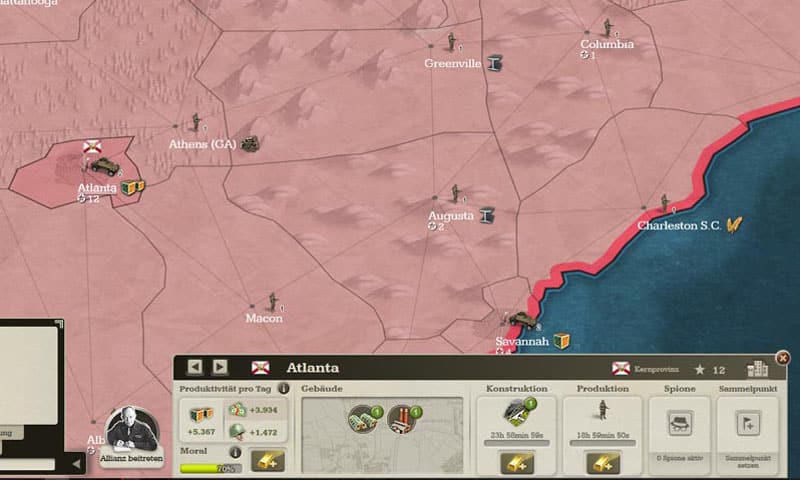
Diplomacy, Alliances, Coalitions
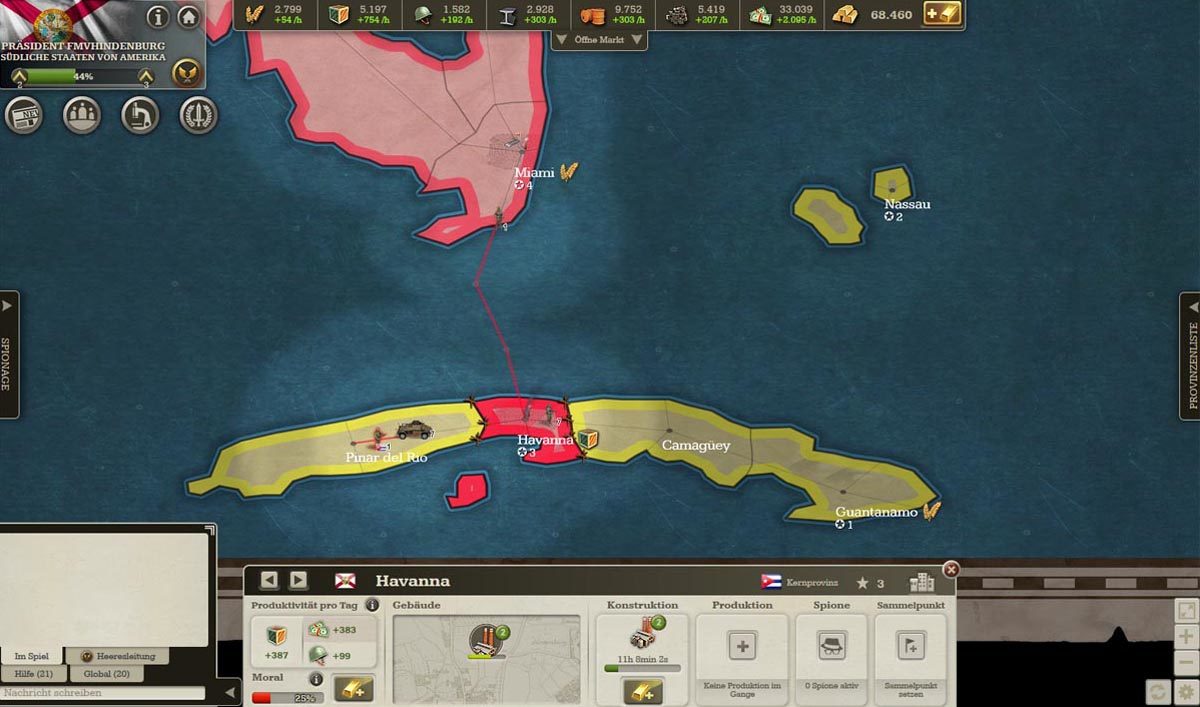
In Call of War, an official coalition can be formed. This includes a revealed map for the members, who can see all the enlightenment results and units of their allies, can march across friendly territory and fight together.
It is also of particular importance to observe its neighbors attentively. On the one hand, to grab opportunities when players do not lead their nation adequately or give up completely. The majority of the 22 players of a game actually give up quick or do not really get into the game, but the remaining players usually struggle all the more stubbornly for the victory in an exciting game.
The nations of left players are led by a relatively strong AI, as are the numerous small states that are initially present – but which are mostly the first prey of the more active players.
Play Call of War
Call of War also runs all day in real-time, so you should log in at regular intervals to review your current status and location of units, and issue new orders to your units, provinces, and factories.
Basically, the real-time strategy game is free, but there is an ‘in-game’ Gold currency that allows players who can not log in so often to compensate for these disadvantages by accelerating construction or research or increasing morale.
At Call of War there are six different scenarios from four to 100 players on the maps of Europe (including the Northern Atlantic and North America), the Mediterranean, a World War and the Pacific. It is also possible to play private games with friends or selected players.

Who not so far knows the free strategy game Call of War, may use the opportunity for a trial:
Try to Play Call of War here:


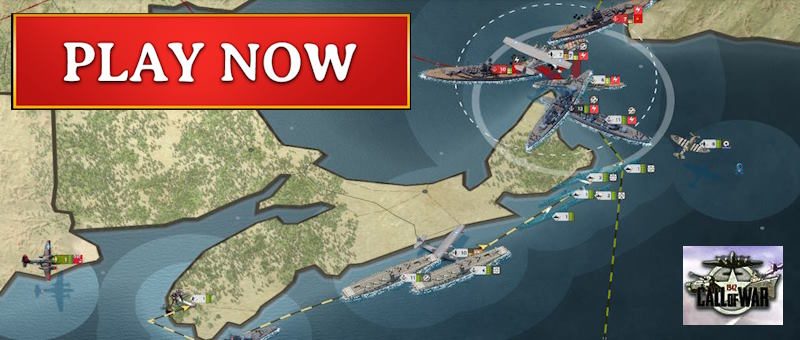

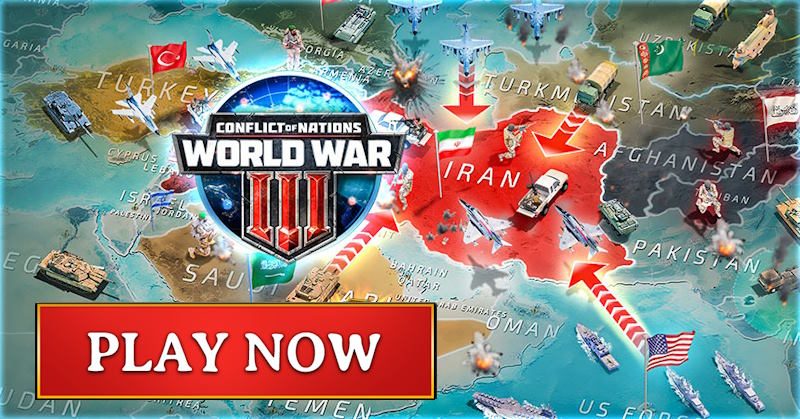

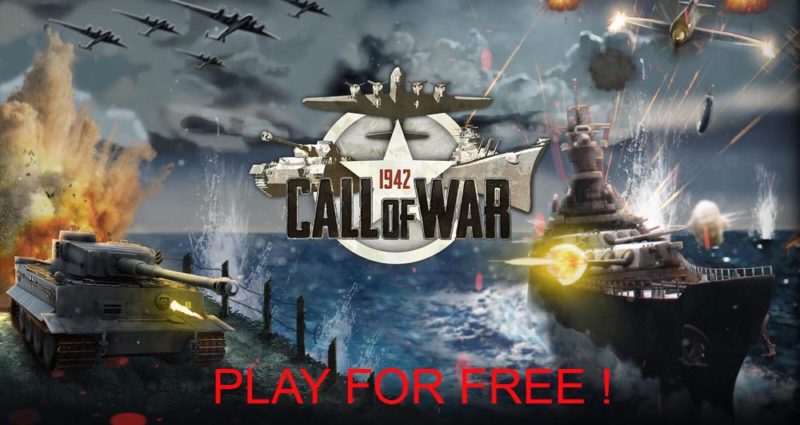
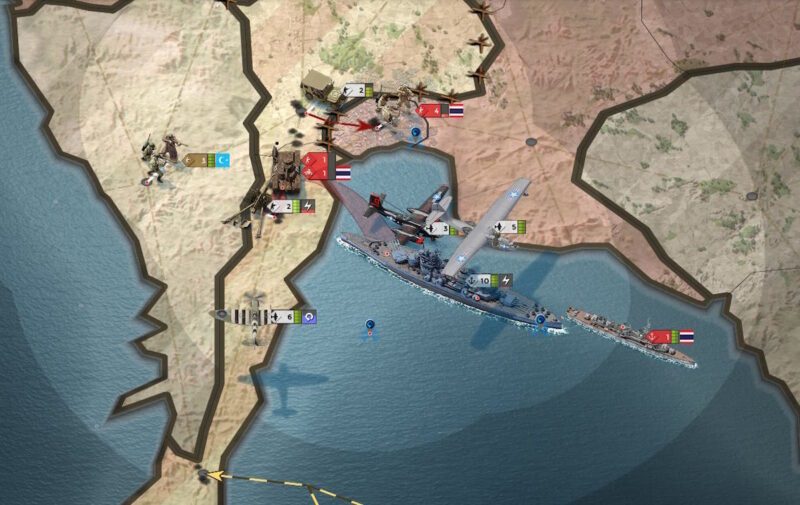
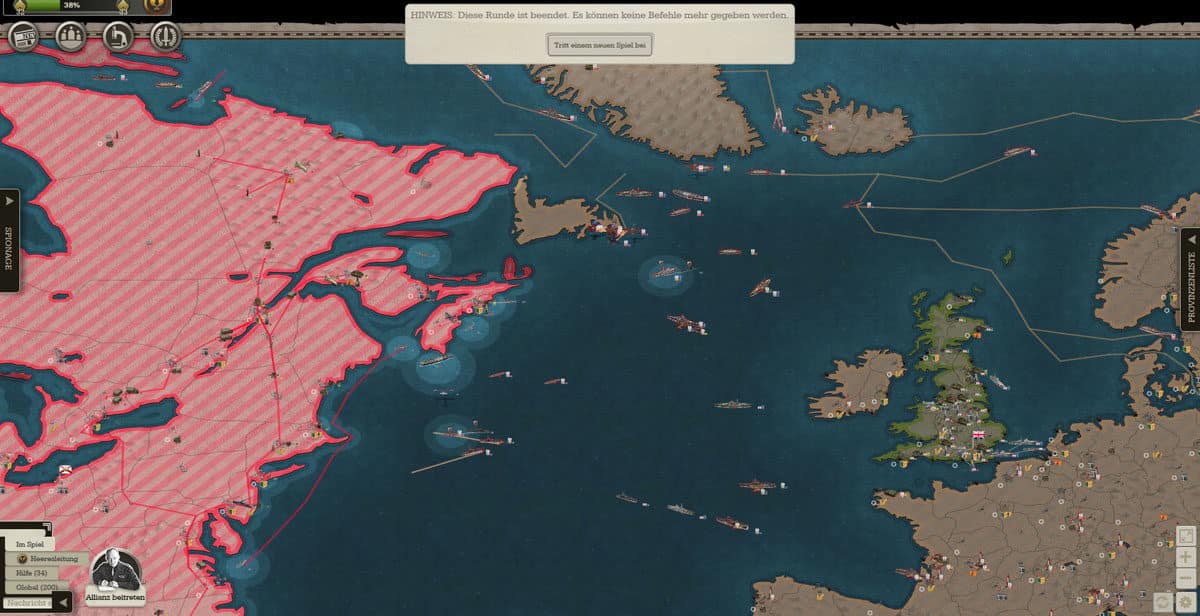

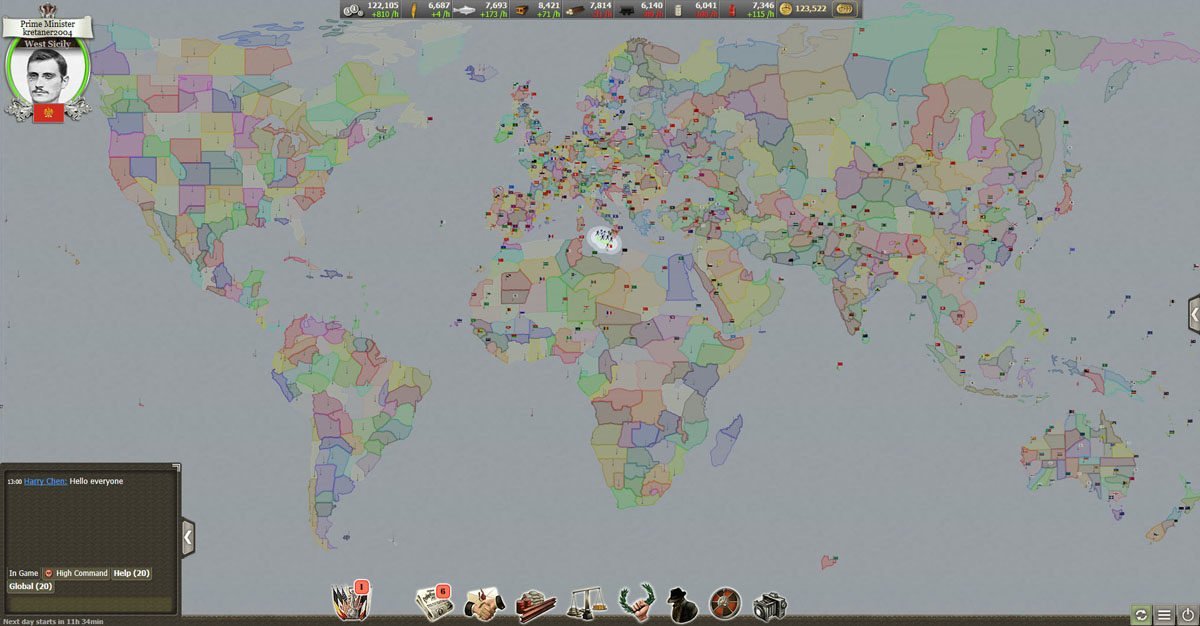
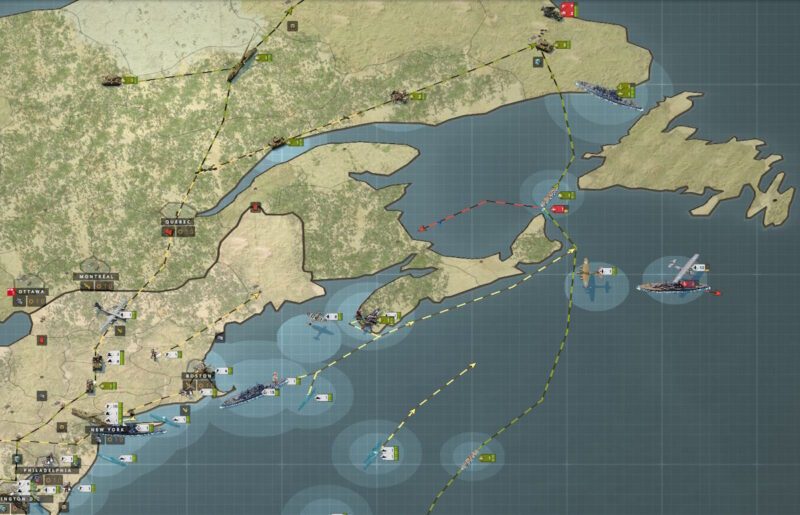

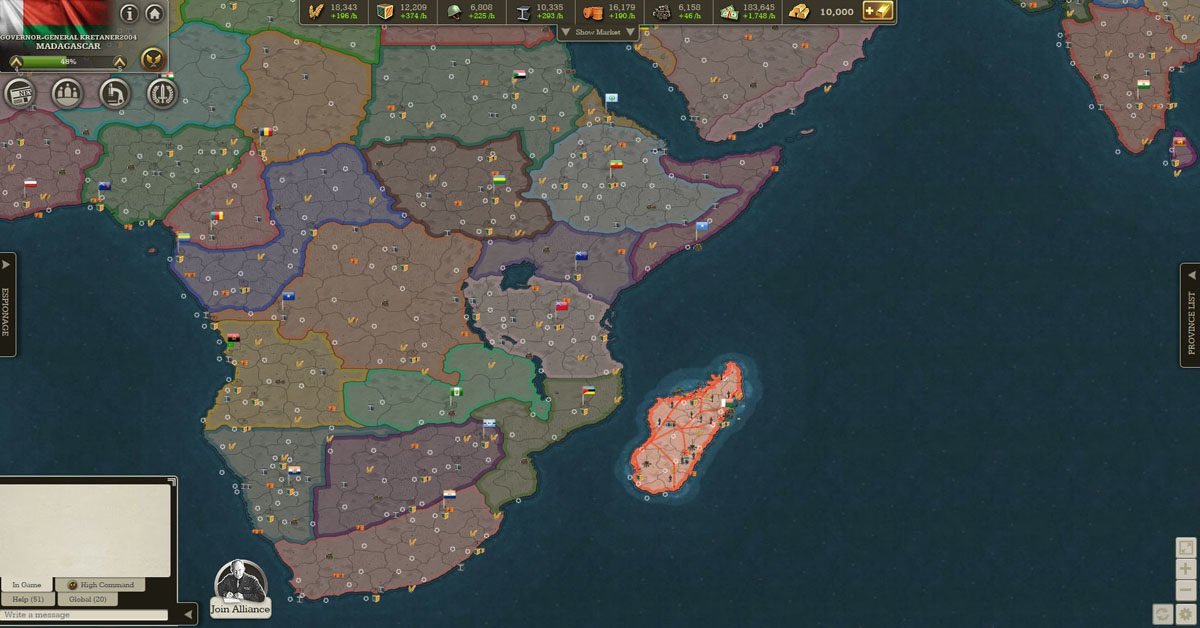
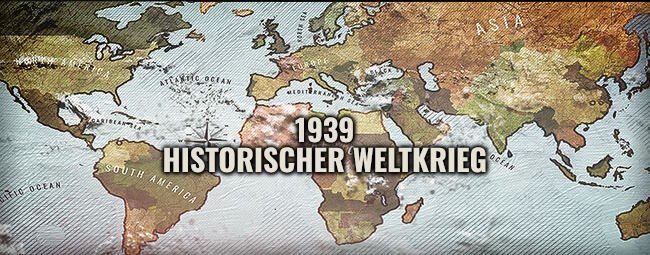
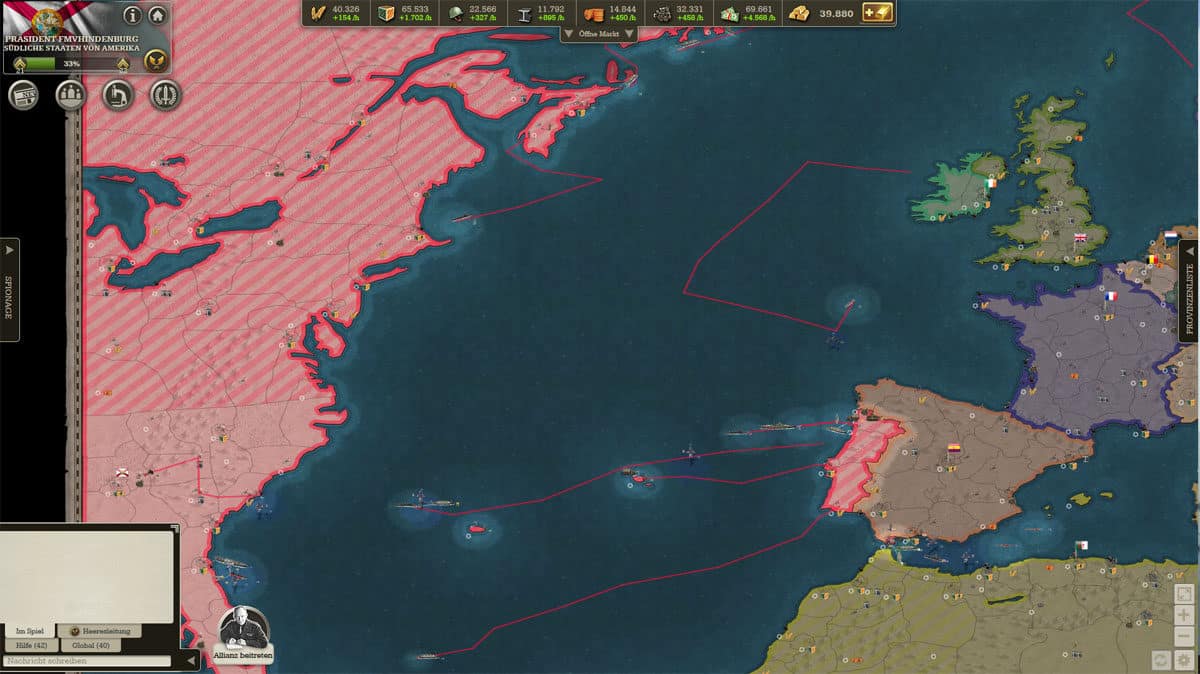
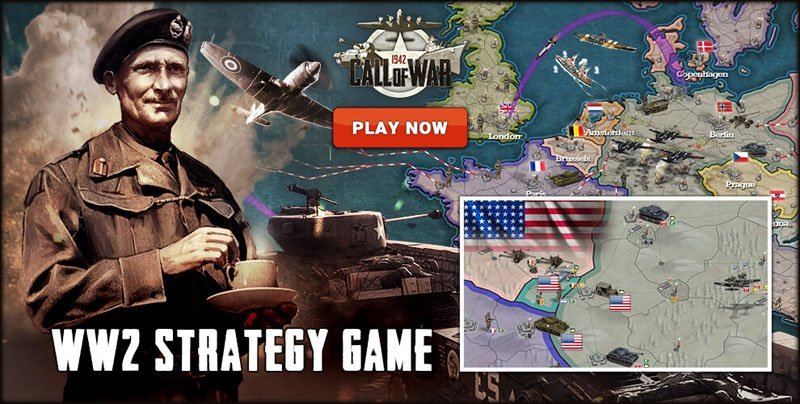
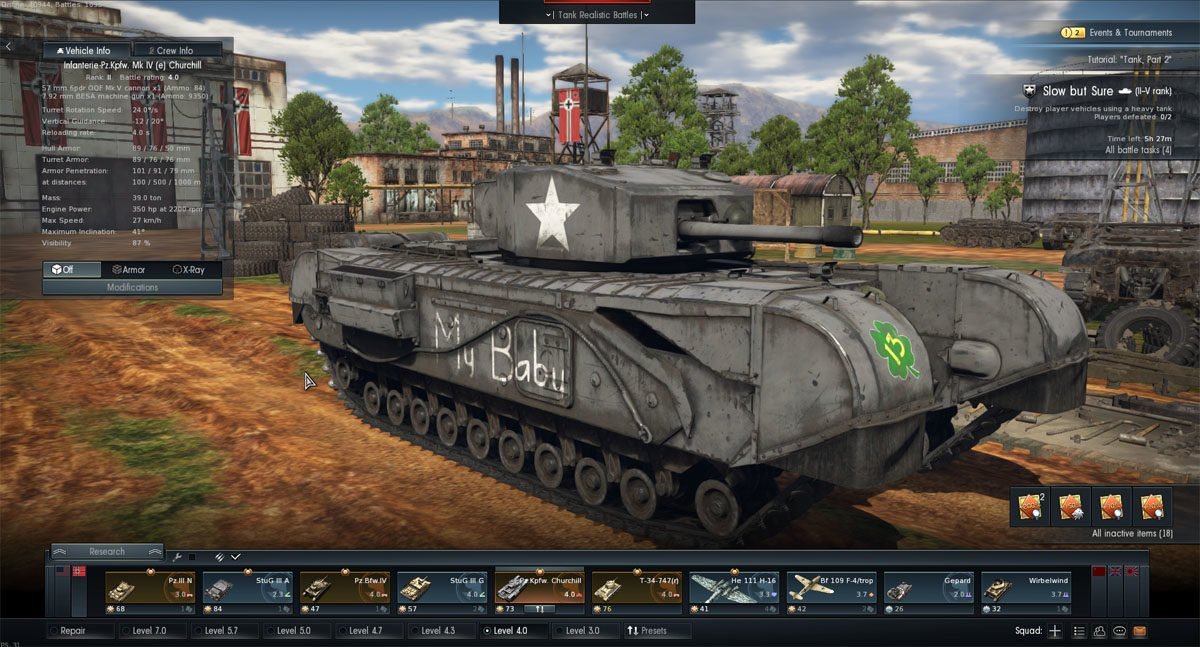
I prefer turn-based, hex-map games at the operational/strategy level. It seems installed games are easier to mod than web-hosted games and have better graphics. I started back in the day with board games by Avalon Hill and SPI (Jim Dunnigan). So now onto computers! Grigsby’s games on Slitherine/Matrix are quite good.
i love this game